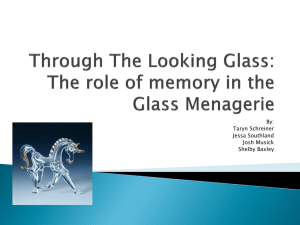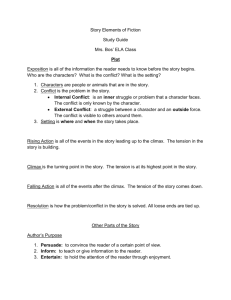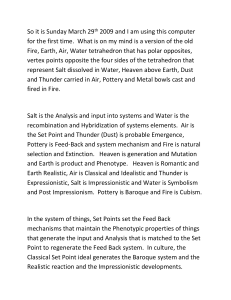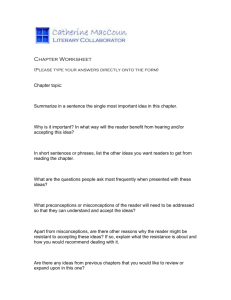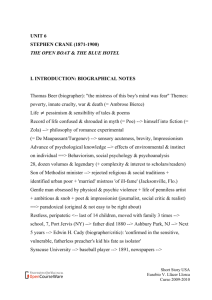Impressionistic-Writing.doc - Social Circle City Schools
advertisement
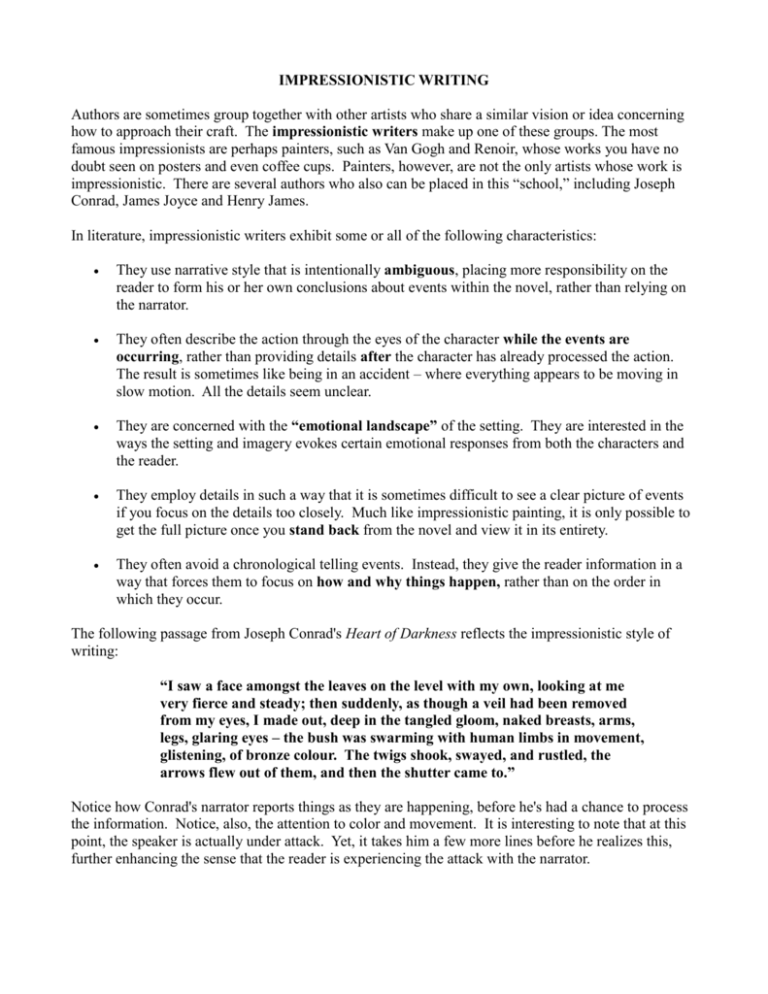
IMPRESSIONISTIC WRITING Authors are sometimes group together with other artists who share a similar vision or idea concerning how to approach their craft. The impressionistic writers make up one of these groups. The most famous impressionists are perhaps painters, such as Van Gogh and Renoir, whose works you have no doubt seen on posters and even coffee cups. Painters, however, are not the only artists whose work is impressionistic. There are several authors who also can be placed in this “school,” including Joseph Conrad, James Joyce and Henry James. In literature, impressionistic writers exhibit some or all of the following characteristics: They use narrative style that is intentionally ambiguous, placing more responsibility on the reader to form his or her own conclusions about events within the novel, rather than relying on the narrator. They often describe the action through the eyes of the character while the events are occurring, rather than providing details after the character has already processed the action. The result is sometimes like being in an accident – where everything appears to be moving in slow motion. All the details seem unclear. They are concerned with the “emotional landscape” of the setting. They are interested in the ways the setting and imagery evokes certain emotional responses from both the characters and the reader. They employ details in such a way that it is sometimes difficult to see a clear picture of events if you focus on the details too closely. Much like impressionistic painting, it is only possible to get the full picture once you stand back from the novel and view it in its entirety. They often avoid a chronological telling events. Instead, they give the reader information in a way that forces them to focus on how and why things happen, rather than on the order in which they occur. The following passage from Joseph Conrad's Heart of Darkness reflects the impressionistic style of writing: “I saw a face amongst the leaves on the level with my own, looking at me very fierce and steady; then suddenly, as though a veil had been removed from my eyes, I made out, deep in the tangled gloom, naked breasts, arms, legs, glaring eyes – the bush was swarming with human limbs in movement, glistening, of bronze colour. The twigs shook, swayed, and rustled, the arrows flew out of them, and then the shutter came to.” Notice how Conrad's narrator reports things as they are happening, before he's had a chance to process the information. Notice, also, the attention to color and movement. It is interesting to note that at this point, the speaker is actually under attack. Yet, it takes him a few more lines before he realizes this, further enhancing the sense that the reader is experiencing the attack with the narrator.

